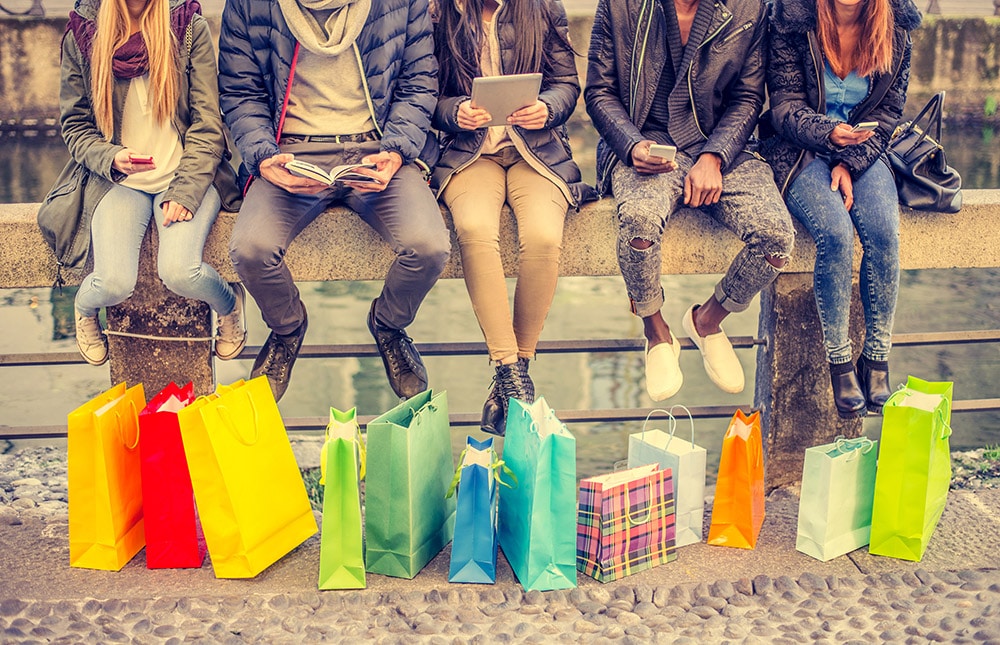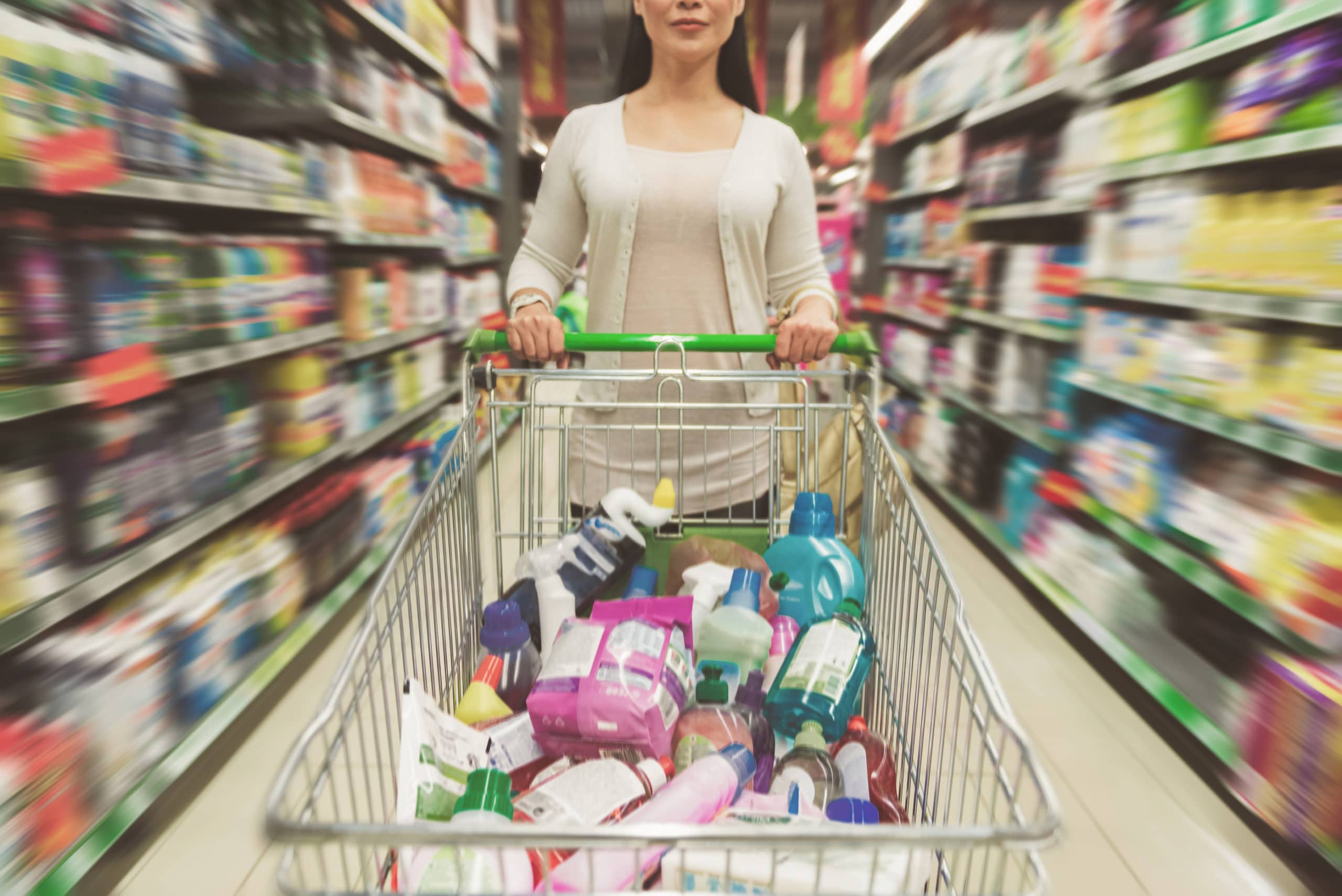The best rewards programs: A comparison for savvy shoppers
There are many things that I am deeply appreciative of: my family, my friends, and all the opportunities I’ve had. But when it comes to shopping, I think what I’m most grateful for is having a lifelong bestie who just so happens to live in New York City, my shopping mecca.
When I head to NYC for a visit, my BFF, Laura, and I do one thing virtually nonstop: shop! There’s Henri Bendel on Fifth Avenue, a million adorable vintage shops in the East Village, and boutique after boutique after boutique in Brooklyn. It’s always an amazing few days—but can be a bit overwhelming.
The only other experience I’ve had where I’ve gotten a bit overwhelmed with shopping was when I first discovered the concept of shopping rewards programs and apps. I didn’t really know where to start. That’s why I want to offer my take on a rewards program comparison.
While they may not host you in a chic New York City apartment for a weekend, the best shopping rewards programs and apps are kind of like my friend Laura in another way: something you know you can count on having in your life for many years—and lots of fun! So, let’s make sure you to compare some of the best and find one (or three or four) that’s exactly right for you!
A Rewards Program Comparison of Store Brand Apps
One of the things I wish I had known about shopping in New York is that the city seems to have two major types of shops: boutiques that offer clothes so gorgeous you’ll want to cry (and prices to match) and consignment shops full of amazing clothes at a major discount just because they’ve been worn before.
As we start our shopping rewards program comparison, it’s important to note there are two basic kinds of these as well: the store brand variety and the third-party shopping app that will work at many different stores. Pro tip: the best move is to use multiple shopping apps to maximize the awards you get from the store-sponsored programs.
First, though, you need to know which store brand rewards programs are the best of the best. Here are some of my personal favorites:
I love, love, love my getaways to Starbucks, which are sometimes planned, but usually a spontaneous decision, like when I duck into Target for school supplies and see the little Starbucks welcoming me there, like an oasis in the desert of trying to pick my battles with fussy kids that I know is in my immediate future. I’ve been loving Starbucks a little more often since discovering the My Starbucks Rewards program, which gives me points, called Stars that I can use for free food and coffee. Sorry Laura, but I just might have a new best friend—Starbucks!
When to use it:
Anytime you buy anything from Starbucks with a registered Starbucks gift card
Where to use it:
At any Starbucks store (so basically everywhere, lol!)
How it works:
Register a Starbucks gift card with the My Starbucks Rewards program, then every time you spend $1 with it, you’ll get two Stars.
Ways to save:
Stars add up to free food and drinks, plus members are eligible for birthday rewards and other bonuses like in-store refills.
Another favorite store of mine that just so happens to have one of the best rewards programs for comparison is Target. I’ve always liked Target, from its dollar section up front to its seasonally-focused section in the back, the design of the stores, the Target brand of products, and how I can find basically anything I ever need there! Throw in a fantastic Target app and rewards program—plus the Starbucks they have in most stores—and I’m one happy shopper! The Target rewards program and app lets you plan your trip, get the low-down on deals, order online, browse the weekly ad, scan barcodes for prices, and more. It’s pretty darn handy to have as a shopping companion, although Laura still takes the cake.
When to use it:
Before and during trips to Target
Where to use it:
In Target, as well as on-the-go
How it works:
Think of this app as half Target savings club and half in-store concierge.
Ways to save:
The app gives you up-to-date info about the latest sales and deals, plus it has full Cartwheel rewards functionality for 5 to 50% off select purchases at checkout.
The only store I spend as much time browsing as I do at Target has to be Nordstrom. And that’s not counting the hours I spend browsing The Rack and HauteLook. But enough about my browsing problem, let’s talk about Nordstrom Rewards! When it comes to clothing stores, this is the rewards program, no comparison—or at least it’s my favorite, anyway. Nordstrom Rewards is free to join and beyond simple. For every $1 you spend, you get one rewards point. When you reach 2,000 points, you can trade them in for a Nordstrom gift card!
When to use it:
Each time you make a purchase at Nordstrom, Nordstrom Rack, or HauteLook
Where to use it:
You may have guessed this one: Nordstrom, Nordstrom Rack, or HauteLook
How it works:
Once you reach 2,000 points, you can trade them in for a $20 Nordstrom gift card.
Ways to save:
Aside from the points and gift card system, this program also gives its users early access to Nordstrom’s incredible Anniversary Sale. For extra points (double, to be exact), you can pair this with your Nordstrom credit card as well.
A Multi-Store Rewards Program Comparison of the Best Shopping Apps
One of the things that has made Laura and I such a great pair over the years is how well we complement each other. I’m kind of OCD about getting to my weekly spin classes and yoga, and I’ve been this way since high school. Laura, meanwhile, is the queen of relaxing and keeping up with hip trends. I’ve been to more memorable before-they-were-famous concerts than I can count because of her great tastes. And she has made it to about ten spin classes because of me (ten more than she would have joined on her own—ha!).
When it comes to picking a shopping rewards program app, you want to find one that complements your favorite store brand apps. Just like you’re better with your bestie than without her, rewards programs are great on their own, but beyond compare when you can team them up. I mean, we’re talking about using multiple free apps that pay you to grocery shop and help you make money fast for the shopping you have to do, people. Isn’t technology wonderful?
Here are three choices that pair exceptionally well with store brand shopping apps:
One of the big things that drew me to Receipt Hog was its name. I love the idea of a big ol’ pig going shopping and hogging up all the savings. It’s just so cute. Anyway, like all of my favorite shopping rewards apps, you can use Receipt Hog when you go shopping at many of your favorite stores. It’s simple: after you’ve made your purchases—it could be for groceries, new clothes, makeup at Target, light bulbs at Home Depot—just take a photo of your receipt. Then, you get to take a paid survey or play a cool little slot machine game for prizes or coins. These are then traded in for cash or Amazon gift cards. Fun and easy!
When to use it:
After you’ve made a purchase
Where to use it:
With Receipt Hog, it doesn’t really matter what you buy or where you buy it. You can use it at any store.
How it works:
Take a photo of your receipt with the app when you’re done shopping and begin accumulating coins. Initially, you’ll earn 10 coins per receipt.
Ways to save:
Once you save up 1,000 coins, you can trade them in for $5 cashback via PayPal.
Think of SavingStar as the digital vintage store of apps because it takes an old idea—clipping coupons—and makes it new again. SavingStar is basically a digital coupon app that pays users to shop at grocery and drugstores. More than 60,000 stores are part of SavingStar and they represent more than 100 retail chains. It’s generally free to use but beware: if your account is inactive for 180 days, they’ll charge you a fee of $3.99. To take advantage of SavingStar, users either link their existing store loyalty cards to the app, or submit receipts after they make a purchase. Savings are added up, then cashed out through PayPal, Upromise, or in the form of Starbucks, iTunes, or AMC Theater gift codes.
When to use it:
Whenever you find a coupon on the app for an item you’re planning to buy
Where to use it:
At any of the more than 60,000 stores that participate in SavingStar
How it works:
Link your existing store loyalty cards to the app or submit your receipts after purchase
Ways to save:
Just keep adding up your savings until you have enough to cash out
Not every shopping trip is going to be as fun as an excursion out in New York, but Shopkick, my favorite shopping rewards app, does turn every trip to the store into a super fun scavenger hunt for points, called kicks. It’s super easy to use, too. Users earn points by simply doing things they do every time they go shopping anyway. At its core, Shopkick is a free app that pays you gift cards to shop, both in-store and online. For example, if you download the app, then walk into a partner store, you’ll earn kicks. Scan featured item barcodes, get kicks. Buy a featured item, get more kicks! Shop online from your sofa using the app, get kicks! You can then trade them in for gift cards to a wide range of the stores you shop at regularly. One of my favorite things about Shopkick is that you really don’t have to go out of your way at all to use it and you can combine it with other shopping rewards apps—including any of the apps listed above—it’s that versatile! And, Shopkick also has a great social media community. So when I’m missing my friend Laura in New York, I can hop on there and hang out with like-minded people who love to share tips about everything from deals to ways to maximize the number of kicks you can earn each month. It’s a small thing, but it makes a BIG difference for my budget, so I can save up for my next trip to see NYC—and Laura, of course.
When to use it:
Whenever you visit a partner store or shop online
Where to use it:
Shopkick partners with all my favorites stores and probably yours as well!
How it works:
Just download the app and then start earning points for the shopping you already do, walking into stores, scanning barcodes, and buying featured items. You can then trade in your kicks for gift cards to TONS of different stores.
Ways to save:
By collecting rewards and trading them in for gift cards.
There you have it, the ultimate rewards program comparison of my favorite shopping apps. Now, get out your phone, download some apps, and get to shopping!
Ready to maximize your shopping experience with savings—and all the while having fun doing it? Download Shopkick for free and join a community of loyal Shopkickers who’ve already discovered the rewards of shopping with us.
And, if you love social media as much as you love being an all-star shopper, join us on Facebook, Twitter, and Instagram for daily shopping inspiration.


